New Zealand
Culture Name
New Zealander
Alternative Name
Kiwi
Orientation
Identification. Originally discovered by Polynesians between 1200 and 1300 C.E. , the country was settled by Maori ("the people") and areas were named after the iwi (tribes). In 1642, the Dutchman Abel Tasman named the land Staten Island. This was soon changed to Nieuw Zeeland, after Zeeland in Holland. Tasman was attacked and never landed, but in 1769, James Cook claimed sovereignty for George III of England.
Extensive European settlement did not begin until 1840, and New Zealand remained a Maori culture. Whalers from the United States and Britain frequently sailed New Zealand waters, married or had children with Maori women, and introduced trappings of Euro-American culture, especially muskets. Missionaries began their activities around 1814.
In the 1860s, gold was discovered, bringing Chinese miners from Australia as well as China and Hong Kong. The Chinese have remained, though they now are chiefly market gardeners and café owners and professionals. Business and banking were supported by a Jewish population. Other minorities who have retained much of their culture are Polish, Lebanese, Yugoslav, and Dutch.
Regional cultural distinctions tend to be between North Island and South Island, coinciding largely with population composition and size. Half a million Maori plus nearly two million Pakeha (Caucasians of Europeans descent) live in the north, and eight hundred thousand (mostly Pakeha) live in the south, culturally subdivided between English (Canterbury) and Scottish (Otago).
The emerging culture leans increasingly on Maori symbolism in art and literature. Maori culture ( taonga ) is being reinvented, and parts of it are incorporated in ceremonies and other public events. Visiting dignitaries receive a Maori welcome, and the All Black Rugby Team (the national team) performs a haka (challenge) before games.
Location and Geography. New Zealand is in the southwest Pacific Ocean and has three main islands—North, South, and Stewart—separated by the Cook Strait and the Foveaux Strait. Several other islands are under New Zealand's jurisdiction.
The three main islands are 990 miles (1,600 kilometers) long and 280 miles (450 kilometers) wide and contain great topographic and climatic variation. The Southern Alps run the length of the western part of the South Island, with peaks over 9,840 feet (3,000 meters). North Island has three peaks over 6,560 feet (2,000 meters), and there are three active volcanoes. Moving glaciers, deep fjords, and large lakes are characteristic of South Island. The climate varies from subtropical in Northland to continental in Central Otago.
The country was two-thirds deforested by the time of the European settlement, and so the high country is largely tussock (South Island) and secondary bush (North Island) with extensive pine plantations.
Demography. In 1996, the population was 3,681,546, including 2,749,980 on the North Island and 931,566 on South Island. Eighty-five percent are urban dwellers, with Auckland, the largest city, approaching one million in population. Eighty percent of the population is of European origin, mainly from the United Kingdom, Holland, Yugoslavia, Poland, Germany, Sweden, and Austria; 14.5 percent claim Maori descent; and the remainder are Pacific Islanders. Along with descendants
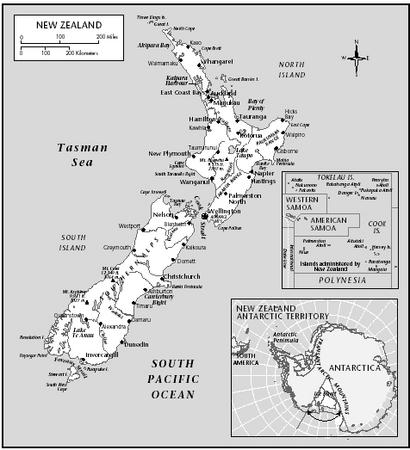
Linguistic Affiliation. The official language is English, but all government institutions and some private ones use Maori as well. While 99 percent of Maori speak English, few Pakeha speak Maori. Preschool Maori children attend Kohanga-reo (language nests) to learn Maori. Universities have Maori studies departments. Maori is a Malayo-Polynesian language.
Symbolism. A national flag, coat of arms, and anthem are important symbols. Other symbols tend to be commercial or cultural and are of Maori origin. The national airline has a stylized Koru (fern leaf), all the national sports teams have a fern leaf, the feathered cloak of a Maori chief is used on ceremonial occasions, and haka is performed before international rugby matches. The kiwi, a flightless, nocturnal bird unique to New Zealand, is the symbol for everything from New Zealand.
History and Ethnic Relations
Emergence of the Nation. Maori have a commemorative and oral history whose major instrument of record is the genealogy ( whakapapa ), which is recorded in the structure of the marae (meeting house) and in the moko (tattoo) worn by many Maori. Maori history features ties with ancestors and with the land.
In 1819, east coast North Island tribes raided the west coast tribes. In 1820, the chief Hongi Hiki visited England, and secured muskets and ammunition. Upon his return, there began the "Musket Wars" on South Island. A state of tribal unrest and migration set in, and the 1820s was distinguished by the appearance of many Maori prophet-military leaders such as Te Rauparaha.
In 1823, Britons were extended protection by New South Wales (Australia), and ten years later, James Busby arrived as the first British resident. However, there were no plans for British settlement until 1839, when the New Zealand Company was ordered to establish British rule. The first settlers arrived in 1840, the year of the signing of the Treaty of Waitangi.
The treaty has been a great source of disharmony between Maori and Pakeha. It was drawn up by a European whose Maori was not fluent and read to chiefs who were unfamiliar with instruments of diplomacy. The greatest ambiguities turned on ideas of sovereignty and ownership alien to the Maori. The British understood themselves to be offering protection in return for sovereignty and the right to use or buy land at nominal cost. In 1975, the Waitangi Tribunal was established to hear claims of abuse of the treaty. Many claims have resulted in return of land, cash compensation, restoration of rights to natural resources, and the handing over of businesses to Maori.
In the 1840s, there were fierce battles between Maori and Europeans. Although the British had an advantage in arms, Maori had an advantage in tactics, and their pa (fortresses) of earth and wooden palisades absorbed artillery shells. The British infantry had to get past the palisades and grapple hand to hand with Maori warriors.
In 1854, the first General Assembly opened and the first governor was appointed. In 1856, Henry Sewell became the first prime minister. Wars broke out again in the 1860s on North Island, but they were quickly suppressed. In 1865, the capital was transferred from Auckland to Wellington, which was considered more central.
Outbursts of Maori resistance were led by charismatic prophets—military leaders such as Te Kooti. However, under the second term of Thomas Grey, a division of the country into provinces and districts and the formation of a parliament with four Maori seats created a stable and unified colony. The last British (Australian) troops left in 1870. That year a national university was established. Women were enfranchised in 1893.
Culturally, the ideals of Europe were adhered to. European craftsmen built mansions for newly enriched land holders, bankers, gold dealers, and politicians. The Mechanics Institute and lending libraries were established, and cities, such as Dunedin, were built.
National Identity. The ruling institutions were British in origin and conduct but were open to Maori, and scholar-politicians such as Te Rangi Hiroa (Sir Peter Buck) and Apirana Ngata achieved pre-World War II preeminence internationally. Maori have had their own parliamentary party, are members of parliament, and have sought to introduce elements of Maori culture into debates.
National identity involves icons more than institutions. Sportspersons in general are iconic national identities, with Sir Edmund Hillary at the summit.
Ethnic Relations. Intermarriage between Europeans and Maori has been common since the first contact. New Zealand used to boast that it was completely without racial prejudice. However, "Maori radicals," often with university training, saw the differentials in school conditions and funding, knew about living conditions in low-income state-assisted housing, and voiced their concerns.
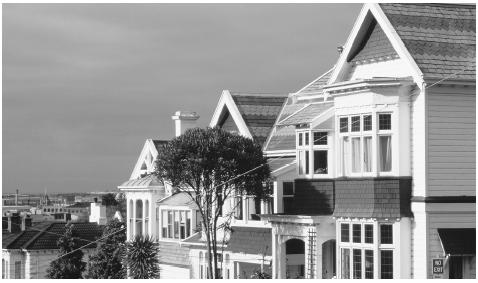
Pacific Islanders living in New Zealand include Cook Islanders, Samoans, Tongans, Tokelauans, Fijians, and Nieueans. Basically, they see themselves as being in New Zealand temporarily to earn money to send their children to school, but many remain permanently. Pacific Islanders tend to be concentrated in and around Auckland and Wellington. They are ghettoized and cling to their Christian views and cultural ways—Polynesian but not identical to each other or to Maori. Urban life, poverty, large families, and a large percentage of teenagers have led to ethnically based conflict in the cities. The recent high-profile immigration of Asians, many of them wealthy, has been accompanied by some ethnic tension.
Gang organization is a feature of the culture. The Mongrel Mob, Black Power, and the Nomads are the three prominent Maori gangs. Each gang, however, views each "chapter" as a family, or whanau. The White Knights is a Pakeha gang that tends toward machismo and racism. Leather jackets, patches, and motorcycles are the chief ritual objects.
Urbanism, Architecture, and the Use of Space
Despite the rural image, 86 percent of the people live in the five main urban centers: Auckland (one million people), Wellington (nearly 360,000), Christchurch (332,000), Hamilton (160,000), and Dunedin (112,000).
Vernacular architecture has involved the colonial villa verandah style: single-story, wooden, with a central hallway, but with the principal bedroom often in the front of the house. State housing provided a standardized bungalow-style house often made of brick and rented to low-income families. These houses have been privatized.
The only distinctive style of architecture is the Maori marae . Its elaborately carved timbers represent origin myths and genealogies. There, a communal sleeping area, and a strict etiquette of greeting, precedence, speechmaking, and farewell is preserved.
New Zealanders like close contact. People who go to pubs or cafés where a band is playing maintain close bodily contact, and open spaces, such as
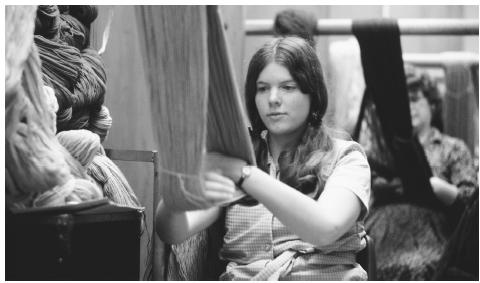
As Europeans have become fifth-generation descendants, it has become increasingly important to them to represent their ancestors. Both Maori and Pakeha households are not complete without pictures of significant ancestors. Contemporary marae architecture derives from the elaborately carved storehouses and chiefs' houses of earlier times.
New Zealanders are inveterate trampers and campers. Countless tracks are maintained by the Department of Conservation or by local enthusiasts. The geometry of the landscape and the sense that it is very different from the city has been the most powerful influence on a unique style of painting.
New Zealanders try to have a hideaway cabin by the lake, the sea, or the stream. In North Island, this is known as a bach; in the South Island, as a crib. There is usually no running water or electricity.
Food and Economy
Food in Daily Life. Before 1975, the diet was based on meat, potatoes, temperate climate vegetables in season (cabbage, peas, beans, carrots, spinach, cauliflower, and broccoli), bread, fruits in season, dairy products, and fish. Chicken was a restaurant delicacy, and the favorite fast food was the meat pie. Beverages were tea and beer. Since 1975, the cuisine has opened up to include a range of tropical and subtropical fruits, vegetables, and spices. It has taken advantage of its Mediterranean climate to produce wine. Food items are readily available in supermarkets. There are ubiquitous fast-food restaurants. However, there is no New Zealand cuisine. Christmas features the presentation of the turkey or ham, followed by the Christmas pudding. The Sunday roast is still served in the British tradition.
The Maori cuisine is based on seafood, mutton birds (young petrels), wild pork or fowl, fat lamb, and kumara. The method of cooking is the earth oven ( hangi ) in which stones are heated by fire, the fire is extinguished so that the stones steam, and a large sealed basket containing the food is buried over the stones and left to cook for several hours. When Maori gather for meetings on the marae, men and women jointly help prepare the food; men dig the hole, place the stones, and bury and remove the food.
Food Customs at Ceremonial Occasions. In the Burns Clubs, the Ceremony of Piping in the Haggis is observed. Otherwise, there is the availability of hot cross buns at Easter.
Basic Economy. New Zealand is an exporter of dairy, meat, fish, and fruit products, which now include processed foods such as wine, deer velvet, venison, smoked and pickled seafood, cheeses, and yogurt. Multinational food companies are moving their processing plants to Australia so that New Zealand-grown food often finds its way back via that country. Logging of plantation pine forests is a major industry, but relatively little processing is carried out. Thus, the food supply is in surplus, and imports are largely luxury items or processed items from Australia or "fresh" fruits and vegetables out of season. Reforms in the 1980s encouraged a reduction in the farming sector because of the weakening of the European and British markets for primary produce. It was proposed to industrialize New Zealand. Apart from oil and natural gas finds and one aluminum smelter, heavy industry is not viable. Manufacturing, assembly, and processing have been encouraged, but since they rely on imported machinery and services, this has not been successful. Motor car assembly and light engineering (especially electrical and electronic appliances) are the basis of the industrial sector.
The fastest growing sector of the economy is service: trade, hospitality, tourism, finance, consultancy, computer software, advertising and film, business services, and insurance.
Almost every household gardens and produces some fresh food for itself. Gardening is a universal hobby.
Land Tenure and Property. Under a clause in the Treaty of Waitangi, the Crown had the exclusive right to extinguish Maori title in land. Under these terms, the Crown had a monopoly over land purchases while bestowing title to land valid in English common law. The Crown became the largest landowner.
In Maori land tenure, tribal boundaries were defined by the putative area settled and utilized by the ancestors, modified by wars and invasions. An individual may claim the use of and the right to burial in the ancestral lands of either parent. The purchase of Maori land by the government created further fragmentation, and the Waitangi Tribunal has been set up to hear claims for compensation. Since the treaty was signed in 1840 and purchases were made until recently, and since Maori have become urbanized, the legitimacy of land claims is complex. Nevertheless, the sense of belonging to one area, the region of the ancestors, still is strong and is finding echoes among the Pakeha. Having reached a fifth generation of settlement, many families see themselves centered in the areas where they first arrived; as Maori have tribal hui (gatherings), Europeans have family reunions.
Other land can be bought and sold. Inheritance by individuals is entirely discretionary among both Maori and Pakeha, and all ownership follows the pattern of English common law. Crown land is managed by the relevant agencies (departments of conservation, forestry, agriculture, and fisheries); iwi lands are managed by elders ( kaumatua ), increasingly on a commercial basis.
Commercial Activities. New Zealand is a primary producer and exporter of meat, dairy products, wool, hides, fish and aquatic invertebrates, wood, fruit, aluminum, and fuels. Tourism is a growing industry.
Major Industries. Processing goods to a second stage or final stage occurs in the dairy industry. Alumina is processed to ingots for export. Cattle is processed for meat for export or for pet food. Wood converted to wood chips is exported for newsprint. Imported parts are assembled as automobiles and electrical and electronic goods. Chemicals are processed for fertilizers.
Trade. The primary export markets are the United States, the United Kingdom, Japan, Russia, Australia, Taiwan, and China. Markets are being developed in the Middle East (Saudi Arabia) and Southeastern Asia (Malaysia and Indonesia).
Division of Labor. The formerly powerful trade unions are now toothless. New Zealand is a monetarist economy that is "restructuring" industries and businesses through the increased use of electronic information and communications procedures and American-inspired management techniques. Jobs are increasingly specialized, requiring certification or on-the-job training. An emphasis on strategy in marketing, stock keeping, accounting, and management rather than on-the-floor production has emphasized and rewarded the managerial class. Computer skills are virtually mandatory.
In 1997, unemployment was 6.7 percent, overall; Maori 16.9 percent; Pacific Islander, 15.3 percent; and Pakeha, 4.7 percent.
Social Stratification
Classes and Castes. New Zealand no longer is considered a welfare state in which all are equal. Ethnic (Maori, Pacific Islander) poverty is evident in
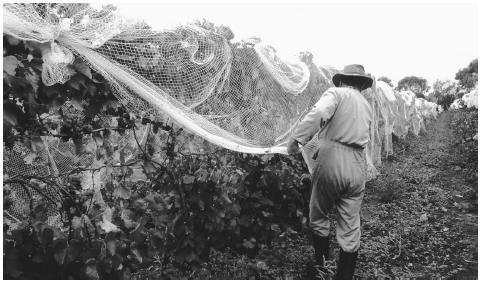
New Zealand has a well-established class society based on income. Cities have developed a "first settler" elite of "old" families claiming prestige and status and occupying the inner ring of the city. Not all are wealthy. Maori maintain a status structure based on mana (inherited or earned) and respect (of older for younger, female for male), though this has largely broken down in the cities.
Symbols of Social Stratification. There are ostentatious houses and expensive cars in some areas. The Maori chiefly class ( rangatira ) and chiefs ( ariki ) wear a feathered cloak (as do honored Pakeha) on special marae occasions. Cultural performances of Maori dances include the traditional kilt (male) and apron (female).
Political Life
Government. New Zealand is a member of the British Commonwealth, and the sovereign is represented by a governor general. Within the Commonwealth, New Zealand is autonomous and is governed by a house of representatives with one hundred twenty elected members of parliament from six political parties. The present government is the first to be elected under a system of proportional representation. A clear majority under this system is unlikely, and the government usually is a coalition.
Leadership and Political Officials. The national government is divided between executive (elected) and administrative officers. It is headed by a prime minister, twenty cabinet ministers, and several ministers outside the cabinet. Below these are regional government bodies divided into cities and districts led by mayors and councillors. Government departments are run on a day-to-day basis by chief executives recommended by the state services commissioner.
Social Problems and Control. The Privy Council in London is the final court of appeal but may deliver only an opinion, not a judgment. The New Zealand Court of Appeal is the highest national appeals court. Its findings must be observed by the High Court. The High Court holds hearings in the main centers. There are district courts (local), employment courts, family courts, youth courts, Maori land courts, and environment courts. There are also over one hundred tribunals dealing with small claims and complaints.
Community law centers, originally set up by law students, give legal advice to those who cannot afford lawyers. There are also victim support groups. The most notable effort at informal social control has been the attempt by Maori to be allowed to exercise whanau (family) authority over accused and accuser in the context of the marae, where the whanau confront each other and elders seek a settlement.
The country is divided into four police region, and there are about 6,500 full-time officers. There are seventeen armed offenders squads that are called out when firearms are involved. There is also a search and rescue service. Other than the armed offenders squad, police do not carry firearms.
Accusations of "racial bias" by police toward Maori and Polynesians have become more frequent, but attitudes toward the police vary with the social and economic circumstances of a person's life. Drug and alcohol abuse seems to be a common ingredient in a large proportion of public and domestic violence and crime.
Military Activity. The armed forces are small and participate in peacekeeping exercises under United Nations or other multinational auspices or independently, including regional training search and rescue operations, fisheries protection, Antarctic support, hydrographic survey, and disaster relief.
Social Welfare and Change Programs
New Zealand has a noncontributory income support scheme for the unemployed, disabled, and sick, for domestic purposes (low income/sole parent), and for retired persons. Numerous social services are government-funded but also rely on volunteers. The numerous services (school, church, club, victim support, etc.), are coordinated as the New Zealand Council of Social Services, which lobbies for changes in government welfare programs and agencies. It stresses biculturalism. There is a no-fault Accident Compensation Corporation funded by employer and employee levies.
Nongovernmental Organizations and Other Associations
Numerous charitable trusts supported by individual donations or corporate profits fund community activities from bagpiping to creche care. There are neighborhood watch organizations. School boards serve voluntarily. There are chapters of worldwide associations such as the Red Cross, Salvation Army, Saint Vincent de Paul, Returned Services Association (veterans), and numerous charitable societies for the blind, the deaf, and the disabled.
Gender Roles and Statuses
Division of Labor by Gender. The stereotype of women in the home and men in the workplace is slowly disappearing. There has been an increase in the number of de facto partnerships and a resulting lack of commitment of men financially and emotionally to children and domestic responsibility.
The Ministry of Women's Affairs seeks to enforce equal opportunity legislation. Shearing gangs are traditionally mixed (male shearers/female sorters), and trades and occupations are becoming less gender-based. There is one female bishop (Anglican), though congregations are overwhelmingly female. In 1996 there were forty women members of parliament, and in 1997 the first woman prime minister took office.
The Relative Status of Women and Men. New Zealand was shocked by the power of gender difference among Maori as shown in the movie Once Were Warriors . Many would argue that although those portrayed were Maori, the degree of domestic sexual abuse and violence is a feature of New Zealand society. Under law there is no gender discriminations. Though almost as many women as men graduate with doctorates, in 1997 there were 402 male professors and 46 female ones. All seven university vice-chancellors were male. Women have been most successful in business at the upper middle range of the executive level or as national magazine editors or heading their own niche companies. Some sports teams are mixed.
Marriage, Family, and Kinship
Marriage. Except in Muslim, Hindu and a few Chinese groups, marriages are entered into by mutual choice. Marriage may be conducted by a celebrant, a Church priest, or a vicar. Parental consent is required if a partner is under 20 years of age. De facto relationships are officially recognized for inheritance and benefit purposes. In 1996, 43 percent of males and 41 percent of females over 15 years were married. The only ground for divorce is irreconcilable breakdown, signaled by the two parties living separately for two years. Traditional weddings are still in evidence, but more people plan their own, and minorities hew to their traditional forms.
Domestic Unit. The nuclear family predominates though there is an increasing number of single-parent
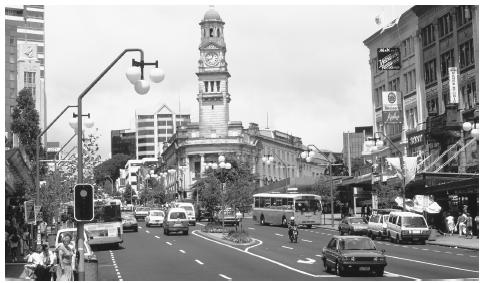
Inheritance. If there is a legally drawn up will, property is bequeathed by the estate holder. Maori inherit rights to ancestral land, tattoos, and burial places.
Kin Groups. Maori have revived their traditional social organization into whanau (extended family), hapu (lineage), and iwi (tribe) in an effort to reclaim their identity and negotiate under the Treaty of Waitangi. Quasi-tribes descended from a known ancestor as well as iwi celebrate periodic gatherings ( hui ). That pattern is also followed by Pakeha with family reunions based on genealogical research.
Socialization
Infant Care. Pakeha use playpens and place an infant in a separate crib, often in a separate room. Maori, especially in low-income and rural areas, have all children sleep together. Children, including infants, may spend as much time at an "aunty's" house as at the house of the natural mother. An "aunty" is any close female relative or friend who may provide full- or part-time infant and child care. Babies are usually put into prams, though commercial baby carriers also are used. Calming and stimulating are matters of individual philosophy.
Child Rearing and Education. New Zealand has a fully comprehensive education system. The Maori "renaissance" has resulted in special Maori education from preschools to middle schools. The Maori language is increasingly an option at all levels, and one aim is for a total education in Maori. Alternative schooling such as Montessori, Rudolph Steiner, home schooling, and state-run correspondence school is available and government-approved. Primary, intermediate, and high school are based on a British model, with uniforms from the intermediate level on and a prefect system with a head boy responsible for discipline. There are co-ed and single-sex schools. Obedience and being able to "take it" are still prized male values.
Higher Education. There are seven universities with 214,228 students and twenty-five polytechnics.
Etiquette
The sacred feature of the Maori is the head and so touching it is avoided. In the marae, the hongi (touching of noses) is the accepted greeting. Otherwise the handshake, the hug, and the cheek kiss are used, depending on the degree of intimacy. Verbal greetings includes "Hello," "How are you?" "Gidday," and, especially, in North Island, Kia Ora ("Good health," "Are you well?"). Men enjoy "mateship," which involves close contact, but otherwise contact distance is arm's length. Behavior in public places is orderly, and good humor is expected. Depending on how recently they have arrived in the country, immigrants and refugees maintain their own customs but gradually adapt, especially in school.
Religion
Religious Beliefs. Sixteen religious sects are represented—with the Anglican Church (18.4 percent) the largest, followed by Catholic (13.8 percent) and Presbyterian (13.4 percent). Twenty-six percent of the people have no religious affiliation. The Pentecostal, Buddhist, and Muslim religions have had the greatest degree of increase.
Religious Practitioners. Archbishops, bishops, priests, presbyters, rabbis, imams, mullahs, elders, and pastors are office holders in New Zealand branches of worldwide churches. There is one Maori church (Ratana), and Maoridom makes wide use of the sacred-secular healing and counseling powers of the tohunga , a specialist in medicine and spirit belief.
Rituals and Holy Places. Rites of the Christian calendar are observed. Cathedrals are present in every major city, and many rural areas maintain small wooden parish churches. Cemeteries are controlled by local bodies, except for Maori burial grounds. Statues of nineteenth- and early twentieth-century Pakeha public figures and war memorials are universal. Their disfigurement has become a sign of Maori protest. Waitangi has become a national memorial, as has One Tree Hill in Auckland, both marking significant events in the evolution of early Maori–European relations. Birthdays, anniversaries, and deaths may be privately or publicly commemorated.
Death and the Afterlife. If embalming is not to take place, burial occurs within a day or two of death. Otherwise, funeral parlors embalm and show the body. Funeral services may be held in churches or funeral parlors. A Maori funeral ( tangi ) takes place in the marae and is a mixture of festivity and grief. Christians believe in a heaven for the afterlife (and a hell if Fundamentalist). Maori ancestors dwell after death in the ancestral lands and are
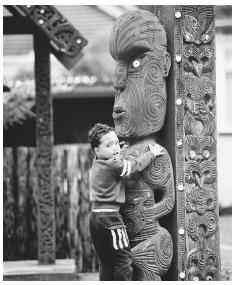
Medicine and Health Care
The former welfare state established a wide network of hospitals, clinics, visiting professionals, free medicine, and free treatment funded from taxes. Political reform led to a mixed system of care based on subsidization, along with legislation allowing for medical insurance and private hospitals. These reforms have generated considerable political debate.
Traditional medicine practiced by tohungas has always been resorted to by Maori, while some Pakeha utilize alternative medical system. All forms of medical practice emphasize a close interaction between the physical and the nonphysical. "Natural" medicines are widely available in health shops, and pharmaceutical medicines are available in licensed pharmacies.
Secular Celebrations
New Year's Day, Waitangi Day, a special assembly at Waitangi of public dignitaries, the queen's birthday, and the anniversary of a province are celebrated.
The Arts and Humanities
Support for the Arts. Profits from the state-run lottery are used by Creative New Zealand to provide funds for the arts. Individual and corporate trusts also support both arts and sport.
Literature. The art of oratory is highly prized among the Maori, who speak extemporaneously but use traditional formulas and references. The Montana Book Awards are a national competition for all categories of writing. Many authors have international reputations and have been winners of overseas competitions. There is a large collection in the national and city libraries of rare European manuscripts as well as private collections. Early missionary influence was the most influential force for Maori and Pakeha literacy.
Graphic Arts. Cities such as Dunedin have state-of-the-art public art galleries. All forms of graphic arts are practiced, and a national style has emerged, blending Maori and European elements. Training in traditional Maori carving has been widely taken up.
Performance Arts. There is a National Symphony Orchestra and at least two first-class city symphony orchestras. The National Youth Orchestra meets once a year. The Royal New Zealand Ballet tours the country. Other national arts organizations are the New Zealand Drama School, Chamber Music New Zealand, New Zealand Choral Foundation, and the New Zealand Film Commission. Local operatic, choral, drama, and orchestral groups are numerous, and New Zealanders perform in a large number of bands. European opera and classical music are the staple fare at one end, with New Zealand composers receiving regular performances, while pop music is locally generated. European drama and ballet prevail, but New Zealand producers and choreographers produce their own versions, and there are many dramatists. Traditional Maori dancing and singing ( waiata ) are presented widely. Most television programming is imported, but New Zealand produces a soap opera and nature documentaries.
The State of the Physical and Social Sciences
All universities have state-of-the-art laboratory equipment, as do the larger research hospitals. There are also Crown Research Institutes and private research institutes. There is a Ministry of Science and Technology. Much government-funded research is linked to agriculture and geology. Medical research is prominent. New Zealand has proved adept at computer software innovation, small electronic devices, and sporting innovations. Polytechnics train mechanics and tradespeople.
All universities and some polytechnics teach the social sciences. Social scientists are increasingly employed by government and private agencies and firms dealing with or employing multicultural districts and workforces. Private consultants carry out "social impact" studies of new industrial, agricultural, and developmental projects. Economists have a direct input into economic policy.
Bibliography
Belich, James. Making Peoples: A History of New Zealanders from Polynesian Settlement to the End of the Nineteenth Century, 1996.
Duff, Alan. Once Were Warriors, 1993.
Kawharu, Hugh. Maori Land Tenure: Studies of a Changing Institution, 1977.
New Zealand Official Year Book 1998, 1998.
Salmond, Anne. Between Worlds: Early Exchanges between Maori and Europeans 1773–1815, 1997.
—P ETER J. W ILSON
New Zealand is place of God and nature.people are very friendly and helping.Kiwi is so innocent bird,that`s why God gifted this wonderful islands to KIWIS.
Cheers,
Bagga Jodh Singh
just loved it
Aruna Krishna
New Zealand is place of God and nature.people are very friendly and helping.Kiwi is so innocent bird,that`s why God gifted this wonderful islands to KIWIS.
Cheers,
Sarah mae berg
New Zealand is place of God and nature.people are very friendly and helping.Kiwi is so innocent bird,that`s why God gifted this wonderful islands to
KIWIS.
Cheers,
meg akale gunghb
Sincerly D. Thompson
Virgolew
Thank You!!
Coming from a different country and a different culture and living in a different country and culture is one heck of an experience and I want that experience to be some of my best days in life. I also believe that this website will help me through journey.
Thank you,
Rosalie.